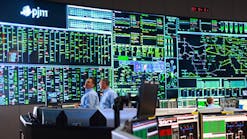According to the Energy Information Agency of the U.S. federal government’s Department of Energy, upgrading to LED luminaires can result in energy savings that average 50%. Adding in the digital control systems, which can dim and brighten the lights based upon conditions, LED luminaires can deliver an additional 10-20% energy savings. Real-time monitoring of the lighting infrastructure, both the operations and diagnostic health of those, can produce significant savings in maintenance, repair and operational costs.
The emerging consensus among business and government leaders is this: Better asset management of outdoor lighting can drive significant efficiencies, in some cases up to 50%.
Street-light poles are a valuable piece of vertical real estate, there to be monetized by the pole owner (be it a city, a utility, or a telco). The owner can charge pole attachment and other fees for hosting Smart City applications like sensor platforms, video surveillance, digital signage, small cells and other services sited on street light poles. Monetization of these smart city applications is accomplished via emerging Machine-to-Machine (M2M) and Internet of Things (IoT) technologies, where metered power, edge processing and data communications are available through smart data hubs mounted on the smart lighting.
Utilities are emerging as key partners in the drive toward a smarter city. Utilities own significant relevant assets, and as incumbent network operators, can be well-positioned to realize better returns from deployed assets and their operational capabilities such as:
- Retrofitting lighting infrastructure with LED luminaires fitted with smart controls;
- Running multiple applications on the utility smart grid network (also known as the advanced metering infrastructure, or AMI);
- Leveraging utility assets to enable non-energy initiatives;
- Capitalizing pole ownership rights to expand into new areas of business such as in unregulated markets;
- Leveraging digital street light infrastructure to monetize other applications.
The realization of smart cities will require entirely innovative approaches to age old municipal issues. Innovative technology, talent, collaboration and financing models will unite stakeholders like never before. The key stakeholders are the cities themselves, utilities, technology companies, infrastructure providers, funding sources and the like. Smart and connected devices deployed across the urban landscape can liberate data from urban and utility assets. The collected data feeds into cloud-based applications and mobile applications in order to create safer, more livable cities – while also enabling the delivery of better services to citizens.
M2M and IoT and information-communications technologies (ICT): these are each increasingly being applied, in the present tense, to improve operational efficiencies inside complex organizations like cities and utilities and to improve quality of life in public spaces. Some of these qualities are public safety, situational awareness, environmental protection, detection of airborne hazards, identification of suspicious activity, robust post-incident forensics and more.
As the many and varied utility-owned lighting fleets are refreshed, utilities have additional opportunities to install systems that increase the utilization of their public infrastructure. The substantial savings provided by LED technology can help to fund these improvements.
Since many city and utility assets are located outdoors and are expected to have useful lives of up to 20 years, any and all smart-city ‘enabling technologies’ must meet the following criteria:
- Value Today and Tomorrow – They must provide products and services to customers that deliver measurable value, including lower energy, repairs and maintenance costs, higher quality of services and ancillary benefits, such as reduced crime and higher property values and platforms to create connected city applications;
- Network Independence – They must create solutions that work in multiple network environments;
- Modularity – They must protect today’s investments while building “plug and play” modules that are compatible with existing installations and provide new features and benefits;
- Open Architecture/APIs - They must enable third-party, “best-in-class” solutions to join the street lighting network and take advantage of an extensive development community and wide variety of sensors and other devices.
According to a study produced by the McKinsey Global Institute, smart city applications could:
- Reduce fatalities by 8–10 %
- Accelerate emergency response times by 20–35 %
- Shave the average commute by 15–20 %
- Lower the disease burden by 8–15 %
- Cut greenhouse gas emissions by 10–15 %
Unfortunately, there’s one major hurdle ahead for those ready to move forward: Most of the current technologies and systems that aim to address these qualities are siloed solutions, with unique installation procedures, and with separate power supplies, software, monitoring practices, utility tariff issues, and billing practices.


